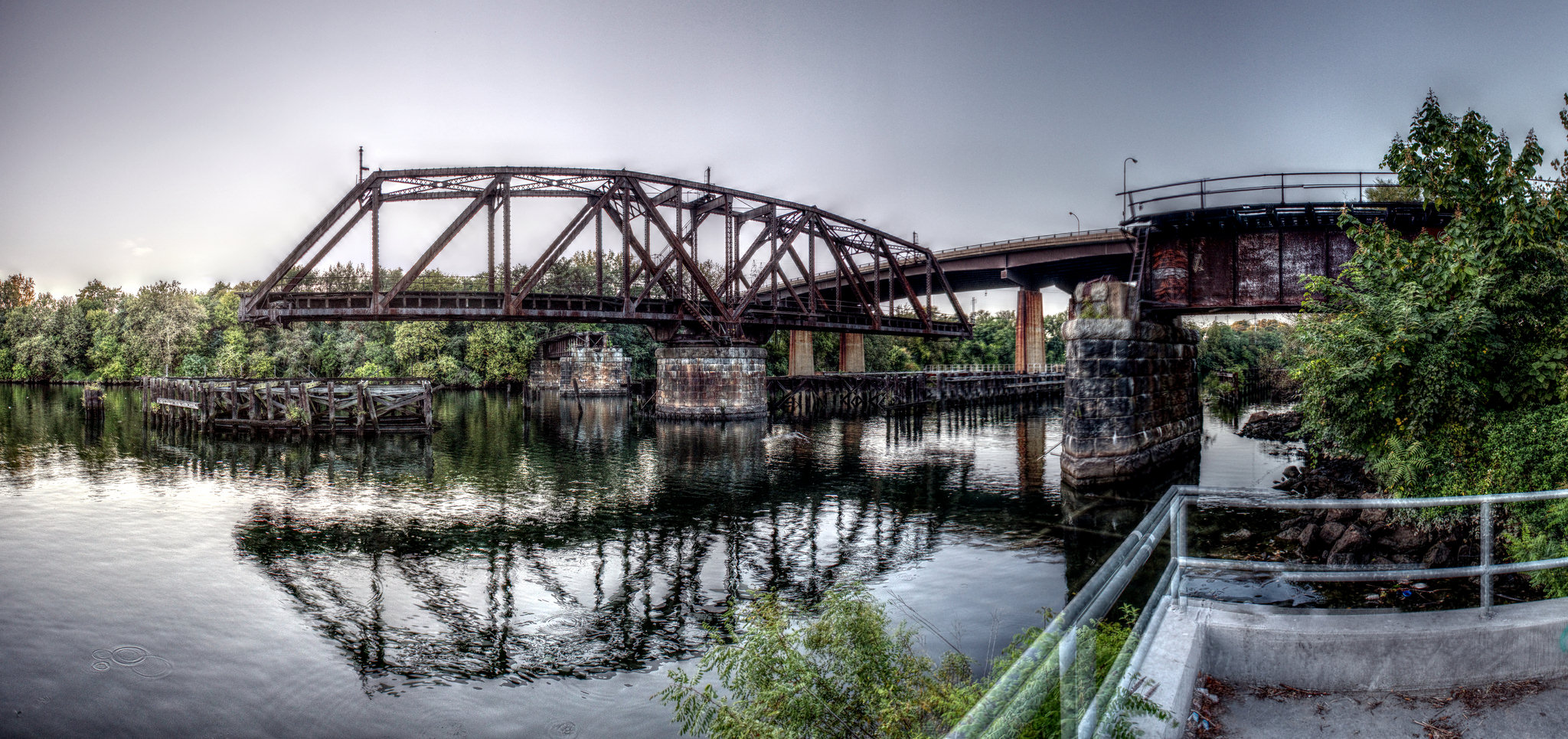Public feedback sought on on Schuylkill River Swing Bridge project

Joe Syrnick is entering the New Year swinging for the bridges.
At a public feedback open house about the Grays Ferry Swing Bridge this Thursday, Schuylkill River Development Corporation’s President said he wants to hear just one thing from attendees: “Stop screwing around, just get this thing built!”
The bridge would be the next major step in the Schuylkill River Trail’s march to connect the Delaware all the way to Pottsville, enabling the trail to cross the river at Gray’s Ferry Crescent to link up to Bartram’s Mile, the mile long path through Bartram’s Garden which should open in spring.
The SRDC decided to reuse a long-abandoned freight rail truss swing bridge next to the Grays Ferry Bridge to do so, acquiring the necessary property from Conrail over the summer. The SRDC worked with the Coast Guard to come up with plans for an elevated, stationary bridge at the site tall enough to allow passage for the fuel barge and tug boat that periodically services the Veolia Energy cogeneration plant just upriver. More recently a new plan emerged: a new swing bridge for pedestrians and cyclists to replace the old.
But the project hit a somewhat unexpected snag, thanks to winning a federal Transportation Investment Generating Economic Recovery (TIGER) Grant. Winning $3.265 million in federal funds to help pay for the $13 million project triggered the need for an National Environmental Policy Act (NEPA) review and a historic resource review under Section 106 of the National Historic Preservation Act of 1966.
The SRDC had been in contact with Pennsylvania’s State Historic Preservation Office (SHPO) earlier in the project because the swing bridge is also a truss bridge—a class of bridge the SHPO takes particular efforts to save. Along with PennDOT, the SHPO oversees certain preservation reviews on behalf of the Federal Highway Administration. The goal is to consider the effect of a project on historic resources and seek ways to avoid, minimize, or mitigate adverse impacts. Among the possible solutions: sale and relocation.
That’s right, PennDOT literally has a bridge they’d like to sell you. In fact, the Schuylkill River Swing Bridge is one of them, assuming Thursday’s NEPA public meeting doesn’t result in overwhelmingly negative feedback that leads to significant changes to the current proposal.
Because of the federal funds, the bridge project had to follow the full NHPA process, which required a consultant to evaluate whether the bridge could be rehabbed. Upon a finding that it could not, that led to an alternatives analysis with six options. Ultimately, the SRDC, PennDOT, the City of Philadelphia, and the Coast Guard landed on replacing the old truss with a much lighter—and therefore easier to spin with a less expensive motor—truss structure. That replaced the original plans for reusing the original bridge’s truss by raising it up 35 feet to allow boats to pass underneath—the Coast Guard said that wasn’t high enough for the tugboats.
That choice, however, lead to the finding of an “adverse effect” during the preservation review because it meant moving the bridge out of its original context, said Amy Kim, PennDOT’s project manager for this proposal. Under federal preservation requirements, such a finding requires avoidance, minimization or mitigation. Here, the plan is to minimize and mitigate the damage by reusing as much as possible, adding historic markers, and employing a similar looking truss design.
While all of the local commenters, including the Preservation Alliance for Greater Philadelphia, signed off on the plan, some out-of-state bridge preservationists pressed harder for a deeper look at rehabilitating the original structure, leading to delays.
Those delays matter because TIGER grant funds need to be “obligated”—set to be spent— within two years of approval. That makes June 30th a hard deadline for having all the design plans in order and ready for contractor bids.
The specific historic preservation process is technically separate but related to the more comprehensive NEPA process. But SRDC needed the historic preservation approval in place before it could advance on the NEPA approvals. After feedback from the public and perhaps some further tweaks to the design, the plans should be ready to go. Both Kim and Syrnick expect the project to make the June 30th deadline.
The public open house to provide feedback on the new bridge plans will be held at Bartram’s Garden on Thursday, January 5 from 4:30 to 7:30 p.m. Attendees do not need to stay the entire time, and members of the SRDC and PennDOT design teams will be in attendance to answer questions.
WHYY is your source for fact-based, in-depth journalism and information. As a nonprofit organization, we rely on financial support from readers like you. Please give today.



